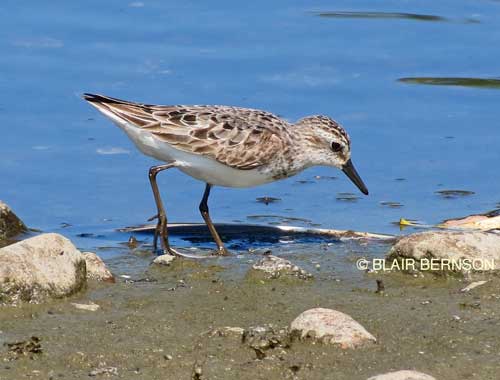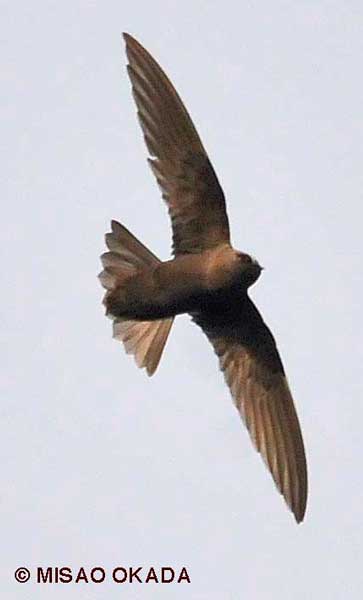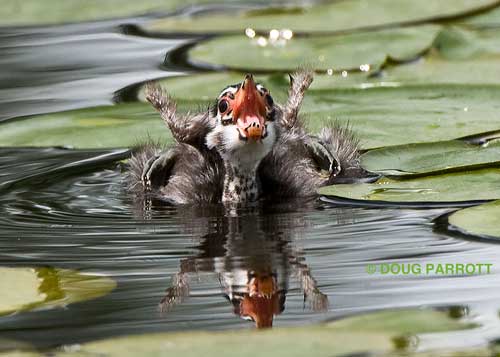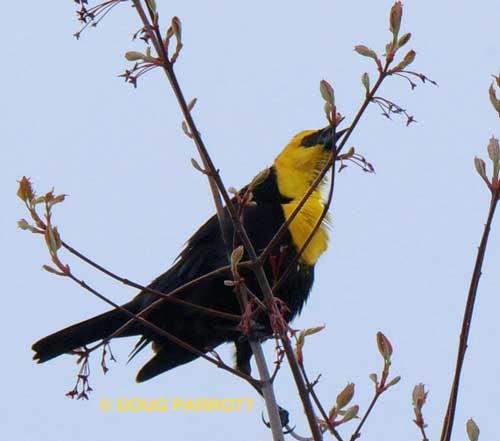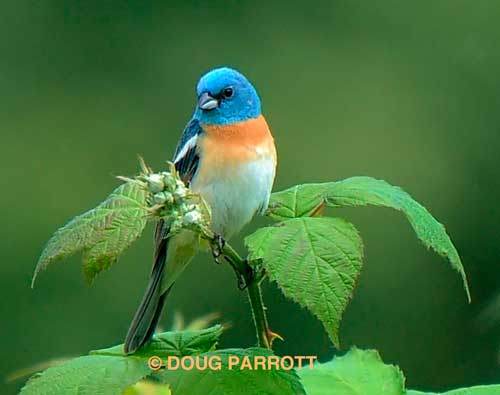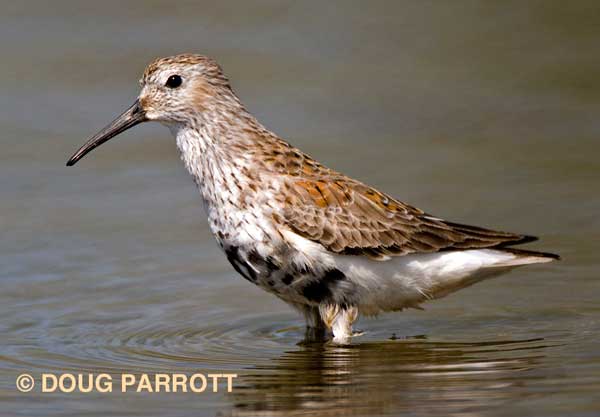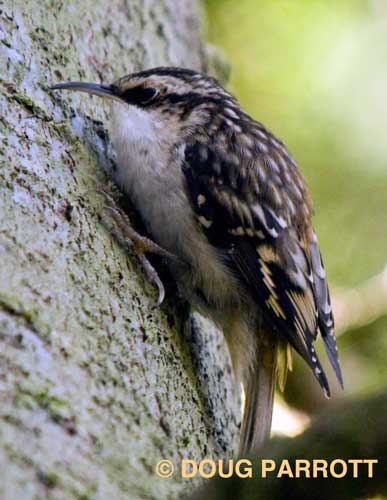
The Brown Creeper family that has nested in the cottonwoods around Boy Scout Pond was out yesterday for the first time. Brown Creepers are small songbirds decked in natty brown and white checks on their backs and spanking white feathers on their fronts. They have stiff tails and long, curved bills that perfectly adapt them for their lifestyle: creeping up the trunks of trees as they probe for insect prey.
Male and female Brown Creepers look alike, so I couldn’t tell Mom apart from Dad. However, Junior was easy to identify. He was sporting odd tufts of down here and there, and his bill was quite small. Like many long-billed birds, creepers keep their bill size under control in the egg, where the fit is tight. Once they hatch, creepers start growing their bills to a respectable size.
I must point out here that I am speaking only in terms of length: when Junior opened his beak to demand to be fed, his width was impressive. His mouth was school-bus yellow inside, and when he turned it to face me, all I could see was a giant yellow maw, squeaking for food.
How his parents resisted this demand was beyond me, but they did. I think they were tired of stuffing it, as they have been doing for the past several weeks, and figured it was time for Junior to learn how to forage for himself.
Junior did not agree. As his parents carefully showed him how to probe while hitching their way up a tree trunk, Junior stayed firmly anchored to the trunk lower down, crying piteously. Relentlessly. He reminded me of another toddler I had seen at the Fill recently, a little boy about two years old. The boy’s father had decided his kid should walk for himself, so he set him down on the Loop Trail, told him it was time to walk on his own, and strode off down the trail. The boy, however, had other ideas and refused to move. The dad urged him to come along. The boy looked mutinous. The father finally said, “Okay, I’m going to leave you there,” and slowly moved away. “I’m leaving you now. I’m really going. Goodbye.” The boy just stood there. Finally, the dad came back, hoisted the kid onto his shoulders and marched off.
He had learned something every experienced parent knows. Never call a toddler’s bluff.
Back at Boy Scout Pond, the Brown Creeper parents caught an insect, flew down to their stubborn toddler, and stuffed it in.


